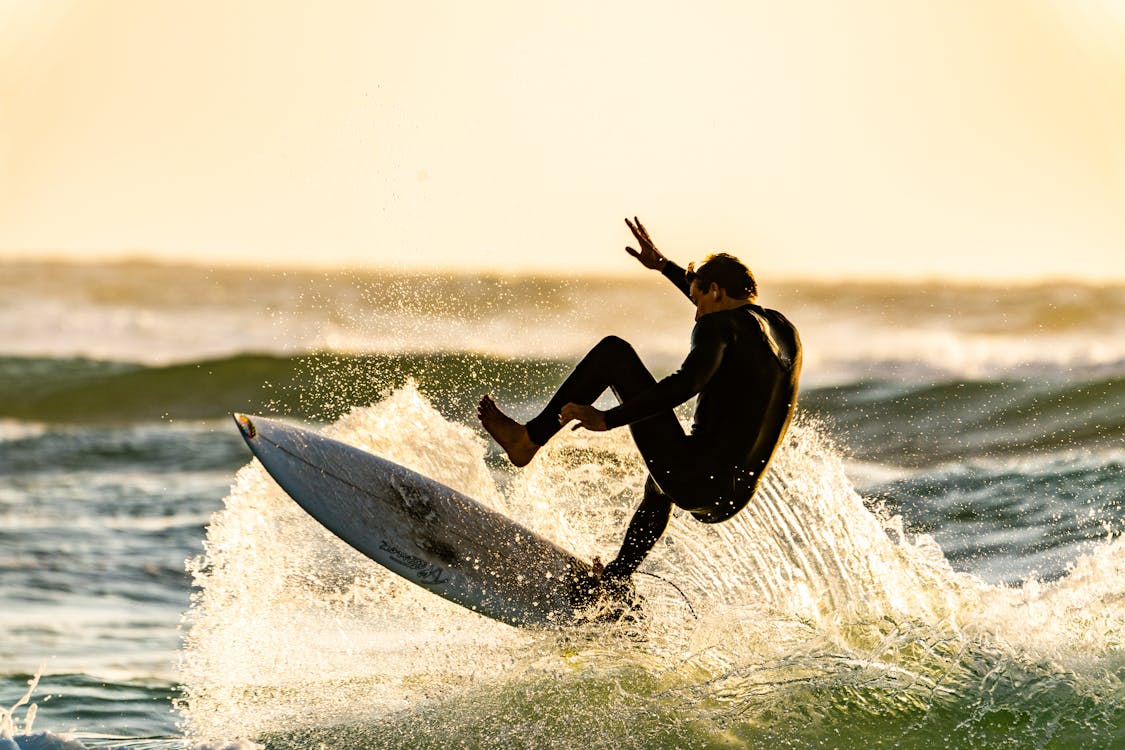Surfing is not just a water sport, but a whole philosophy of life that combines freedom, the power of nature, and the thirst for adventure. Each year, surfing’s popularity grows as more people seek not only physical exercise but emotional refreshment. Surfing allows you to feel harmony with the ocean and overcome your fears.
This guide will tell you how to start surfing, which places are worth visiting, what to take with you, and what to pay attention to when choosing your first surf camp — as noted by the editorial team at Baltimore Chronicle.
What is Surfing and Where Did It Come From
Surfing originated in ancient times on the Polynesian islands, where locals entertained themselves by sliding on waves on wooden boards. But it was Hawaii that became the cradle of modern surfing. In the 20th century, this sport spread worldwide and its popularity now knows no boundaries.
Modern surfing is not only classic wave riding. There are several types:
- Longboarding — riding on a long board, more suited for smooth gliding.
- Shortboarding — dynamic style on a short board.
- SUP surfing — standing up with a paddle.
- Bodyboarding — lying on a short board.
- Windsurfing and kitesurfing — using wind as propulsion.
Surfing has become part of popular culture, from TV shows to fashion, associated with eternal youth, health, and freedom.
How to Start Surfing: First Steps
Many wonder: is it possible to start surfing without prior experience? Yes! The main thing is to choose the right place and instructor.
Here’s what to consider:
- Physical fitness. Surfing requires endurance and good coordination.
- Choosing a location. Beginners should pick beaches with gentle waves.
- Surf school or camp. Professional instructors help avoid mistakes and injuries.
- Proper gear. A large softboard and wetsuit are ideal.
- Practice on land. Balance training and warm-up are essential steps.
Common Beginner Mistakes
- Underestimating the ocean’s power
- Not knowing how to “read” the wave
- Ignoring safety rules
- Trying to catch every wave instead of studying the situation
- Lack of patience — learning takes time
Surfing Gear: What You Need to Know
Proper gear is the key to safety and effective learning. The quality of your board and wetsuit affects not only comfort but also your progress.
Essentials:
- Surfboard. Softboards 7 feet and longer are suitable for beginners.
- Wetsuit. Protects from cold, burns, and cuts.
- Leash. Strap attached to your leg to prevent the board from drifting away.
- Wax strip. Applied to the board to prevent slipping.
- Special backpack or bag. For carrying the board.
Comparison of Board Types for Beginners
| Board Type | Length | Material | Stability | Difficulty Level |
|---|---|---|---|---|
| Softboard | 7–9 feet | Soft foam | High | Low |
| Funboard | 6–8 feet | Composite | Medium | Medium |
| Longboard | 9+ feet | Hard | Very high | Low |
| Shortboard | 5–6 feet | Hard | Low | High |
Best Surfing Spots in the World
If you’re looking for the perfect wave, location choice is crucial. Here are the most popular regions worth visiting:
- Bali (Indonesia) — surfer’s paradise with waves year-round.
- Hawaii (USA) — legendary Waikiki and Pipeline beaches.
- Costa Rica — warm climate and excellent infrastructure.
- Portugal — Nazaré and Peniche — world-class surfing.
- Australia — famous Bondi and Gold Coast beaches.
- France — Biarritz — Europe’s surfing hub.
- South Africa — perfect waves at Cape of Good Hope.
Where to Surf in Ukraine?
Although Ukraine is not famous for high waves, some spots suit beginners:
- Kinburn Spit
- Zatoka
- Skadovsk
- Odessa coast
- Arabatska Spit
Surf schools have begun to appear in these regions, offering basic training.
Surf Tours and Camps: What to Choose
A surf tour is not just a vacation but a full immersion into surf culture. Camps usually offer:
- Accommodation near the beach
- 2–3 training sessions daily
- Theoretical lessons
- Yoga and meditation
- Group trips and events
Camps can be:
- For beginners
- For advanced riders
- Themed (yoga+surfing, surfing+fitness)
Safety on the Waves: Basic Rules
Surfing involves risks, so you must strictly follow several rules:
- Choose waves appropriate to your level.
- Always use a leash.
- Don’t surf alone.
- Remember wave priority rules.
- Know basic rescue techniques.
- Do not ignore local instructor warnings.
Why Surfing Is More Than Just a Sport
Beyond physical activity, surfing develops concentration, patience, and the ability to handle unpredictable situations. People who surf regularly often report improved mental health and increased energy levels.
Surfing is a way to live in harmony with nature, find balance between activity and relaxation, and make new friends worldwide.
We previously wrote about, what to eat as an athlete in summer: diet for an active body.

